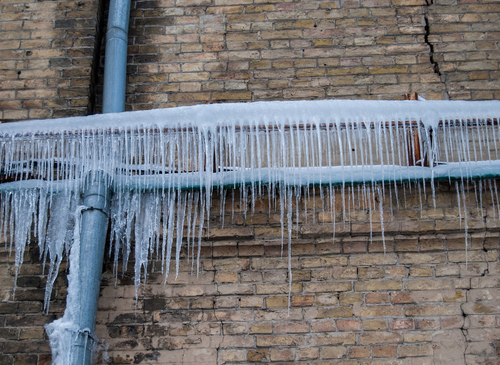How to Defend Plumbing System from Cold Weather: Critical Strategies
How to Defend Plumbing System from Cold Weather: Critical Strategies
Blog Article
We've unearthed this article on How To Avoid Freezing Pipes below on the internet and decided it made sense to talk about it with you in this article.

Winter can wreak havoc on your plumbing, especially by freezing pipes. Right here's just how to avoid it from taking place and what to do if it does.
Introduction
As temperatures decrease, the risk of frozen pipelines boosts, potentially resulting in expensive repair services and water damages. Understanding exactly how to stop icy pipelines is crucial for home owners in cold climates.
Comprehending Frozen Pipelines
What triggers pipelines to ice up?
Pipelines ice up when exposed to temperatures below 32 ° F (0 ° C) for extended periods. As water inside the pipelines ices up, it increases, putting pressure on the pipe wall surfaces and possibly triggering them to burst.
Threats and damages
Frozen pipes can lead to supply of water disturbances, residential or commercial property damage, and costly repair work. Burst pipelines can flood homes and cause considerable structural damage.
Signs of Frozen Pipes
Identifying icy pipelines early can avoid them from breaking.
Exactly how to identify frozen pipelines
Look for reduced water circulation from faucets, unusual odors or noises from pipelines, and noticeable frost on subjected pipes.
Prevention Tips
Insulating at risk pipelines
Cover pipes in insulation sleeves or use warmth tape to shield them from freezing temperature levels. Focus on pipelines in unheated or external areas of the home.
Home heating strategies
Keep interior spaces appropriately warmed, specifically locations with plumbing. Open closet doors to enable warm air to circulate around pipelines under sinks.
Securing Outside Plumbing
Yard pipes and outdoor taps
Detach and drain yard hose pipes prior to wintertime. Install frost-proof faucets or cover outside taps with protected caps.
What to Do If Your Pipelines Freeze
Immediate actions to take
If you believe frozen pipelines, keep taps open up to eliminate pressure as the ice melts. Make use of a hairdryer or towels soaked in hot water to thaw pipelines gradually.
Long-Term Solutions
Architectural changes
Consider rerouting pipes away from exterior walls or unheated areas. Add additional insulation to attic rooms, basements, and crawl spaces.
Upgrading insulation
Invest in high-grade insulation for pipelines, attic rooms, and walls. Proper insulation helps maintain consistent temperature levels and minimizes the threat of icy pipelines.
Conclusion
Avoiding icy pipes needs proactive measures and quick reactions. By comprehending the causes, signs, and preventive measures, home owners can protect their plumbing throughout cold weather.
5 Ways to Prevent Frozen Pipes
Drain Outdoor Faucets and Disconnect Hoses
First, close the shut-off valve that controls the flow of water in the pipe to your outdoor faucet. Then, head outside to disconnect and drain your hose and open the outdoor faucet to allow the water to completely drain out of the line. Turn off the faucet when done. Finally, head back to the shut-off valve and drain the remaining water inside the pipe into a bucket or container. Additionally, if you have a home irrigation system, you should consider hiring an expert to clear the system of water each year.
Insulate Pipes
One of the best and most cost-effective methods for preventing frozen water pipes is to wrap your pipes with insulation. This is especially important for areas in your home that aren’t exposed to heat, such as an attic. We suggest using foam sleeves, which can typically be found at your local hardware store.
Keep Heat Running at 65
Your pipes are located inside your walls, and the temperature there is much colder than the rest of the house. To prevent your pipes from freezing, The Insurance Information Institute suggests that you keep your home heated to at least 65 degrees, even when traveling. You may want to invest in smart devices that can keep an eye on the temperature in your home while you’re away.
Leave Water Dripping
Moving water — even a small trickle — can prevent ice from forming inside your pipes. When freezing temps are imminent, start a drip of water from all faucets that serve exposed pipes. Leaving a few faucets running will also help relieve pressure inside the pipes and help prevent a rupture if the water inside freezes.
Open Cupboard Doors
Warm your kitchen and bathroom pipes by opening cupboards and vanities. You should also leave your interior doors ajar to help warm air circulate evenly throughout your home.

Do you enjoy more info about Preventing and dealing with frozen pipes? Make a remark further down. We'd be happy to know your opinions about this blog. In hopes that you visit us again before long. Sharing is nice. Helping people is fun. I value reading our article about 6 Ways to Prevent Frozen Pipes.
Click Here To Read More Report this page